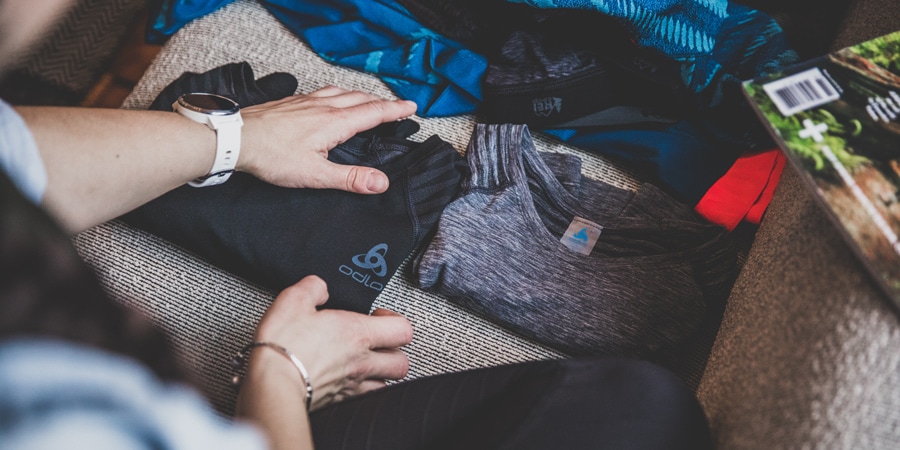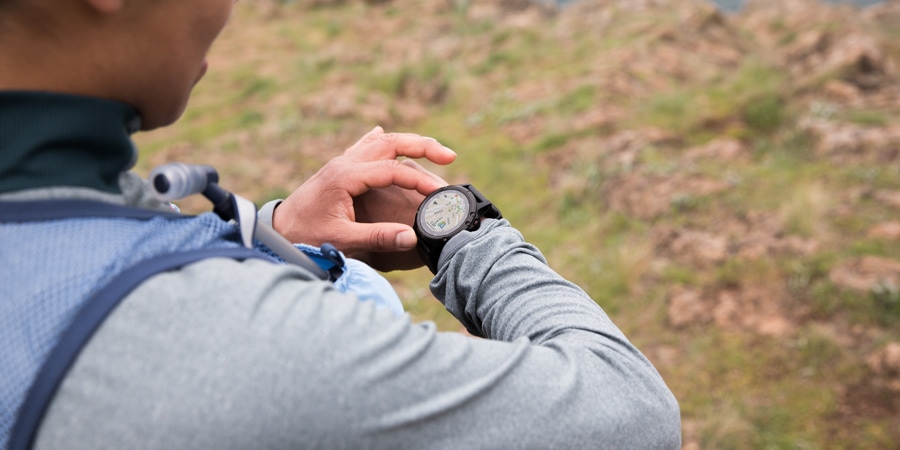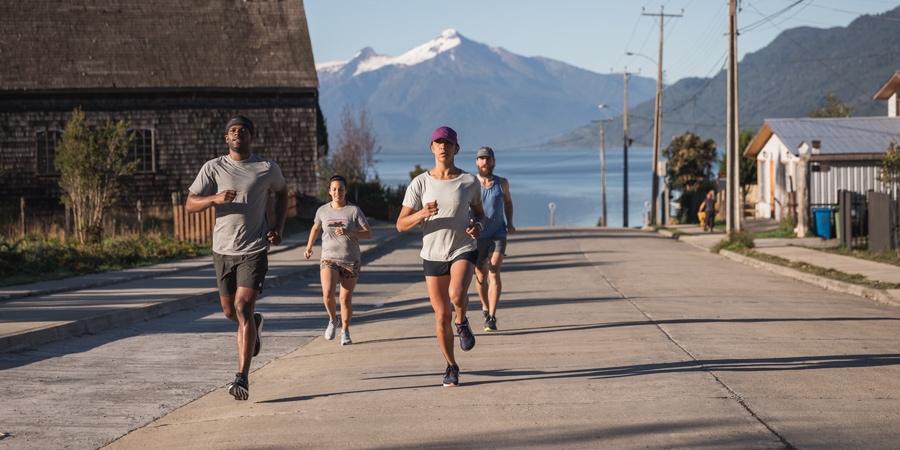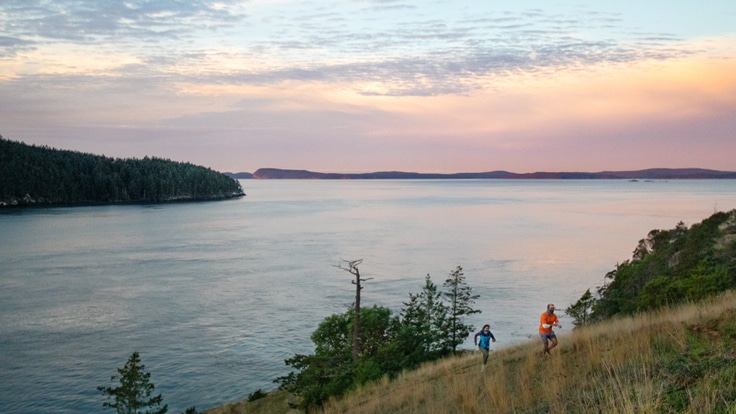Editor's note: Domestic and international travel destinations continue to be impacted by COVID-19. Continue to review and follow guidance from the U.S. State Department and the Centers for Disease Control when traveling.
Running is all about routines. Whether you're new to the sport or you've been pounding the pavement for years, you likely have a rhythm. You run at a specific time. You recover at another. You eat certain foods before, during and after your run. Traveling, with its interruption of daily patterns, can upset that rhythm and throw a wrench in running plans. But it doesn't have to. With some forethought you can run on your vacation, and have fun with it, while still chasing your fitness goals.
To stay on track, we've got some simple advice about what to do before, during and after your travels:
Before Your Trip:
During Your Trip:
After Your Trip:
Before Your Trip
Part of the fun of travel is the promise of serendipity and new experiences. But this also can cause your running routine to go out the window. Take some of the guesswork out of the vacation by packing your running essentials plus a few extras.
Pack for vacation with running in mind

Running gear doesn't occupy much luggage space. Plan to bring at least one pair of road or trail shoes and the clothes you would normally wear to run. If you're traveling for two weeks or fewer and will have access to a washer and dryer (or the ability to hand-wash your clothes), you can get away with a single set of running clothes that you wash after every couple of wears. Prioritize pieces that wick moisture and dry quickly. Tight on space? Pack athleisure clothes that double as exercise apparel, and stuff your running shoes with small items like socks.
Check the weather forecast. The last thing you want is to be stuck in Seattle during the rainy season without a water-repellent layer or the heat of an Atlanta summer without breathable clothes. Running in the rain or cold may call for essentials like a running jacket, sweat-wicking leggings and a winter hat or gloves. Warm destinations require fewer layers, but they necessitate other items like a baseball-style cap and sport sunglasses.
Vacation isn't the time to shirk on safety. Pack a first-aid kit, sun protection (in addition to sunscreen many brands make running clothes with an ultraviolet protection factor) and lights and reflective gear, especially if you plan to run after hours. A blister kit and bug spray can be nice to have, depending on where you're headed. Check out Tips for Running at Night for more advice.
When flying, most runners can simply check a bag with their stuff that they retrieve at the end of their journey. But if you're an athlete traveling for a race, you may want to pack everything in a carry-on to reduce the risk of lost luggage.
Prepare to fuel and stay hydrated
It's easy to work up an appetite when you're sightseeing. Throw running into the mix and you may find that you're burning more calories than you do at home. If you'll be leaving behind familiar grocery store chains while traveling, consider packing a few of your favorite snacks from home. Staples like instant oatmeal and coffee can offer a quick fix when you're on the road, whereas prepackaged snacks like energy bars and gels are a small and easy supplement to throw in your bag when flying.
If you do head out for a vigorous or sustained effort while traveling, avoid the temptation to quickly shower and head straight to your next sightseeing engagement. Instead, help your muscles recover by eating something within one to two hours after your run, ideally a combination of carbohydrates and protein. For more tips, read Runners Nutrition Basics.
If you plan to take runs lasting longer than 45 minutes while traveling, make a hydration plan. A handheld water bottle or vest with a hydration bladder can make it easier to stay hydrated during longer efforts. A hydration belt with flasks can work, too. Ensure your hydration kit works for you before you hit the road. For more ideas, read Hydration for Runners.
Plan your route

Part of the fun of traveling is discovering new-to-you places to explore. Extend that to your runs, too. Before heading out, peruse websites for local parks and recreation areas where you can run. Sites like MapMyRun and Strava show routes logged by other runners. Some feature heatmaps that reveal the most popular places to run in a region. When you're in a place you don't know, let the group you're with know your plans and consider running with a partner to increase your margin of safety.
Some runners also use their GPS watches (also known as fitness trackers) to help them find places to run and navigate when they're on the go. Some of these watches allow you to leave a breadcrumb trail of points you've traveled along a route so you can trace your way back to your starting point. Keep in mind that you need to be in service range for most GPS tracking functions to work. Your phone paired with Strava, MapMyRun or another tracking app can offer a lot of the same capabilities. These apps tend to drain phone battery life, so you may want to pack a portable battery if you'll rely on your phone a lot.
During Your Trip
Ah, you've made it to vacation. Relax! Settle into a different pace of life! And if running is a priority, consider these tips to stay motivated and connect with the local running community.
Make time to run
Make time for running while you travel. If you know the day ahead will be full of sightseeing, for instance, lace 'em up before you hit the tourist track. Or, set aside 30 minutes at the end of every day to unwind with a jog around the neighborhood. Remember that the tricks that help boost motivation at home also apply when you're on the go: Building a routine and sticking to it can make you more accountable to your goals.
There are other creative ways to squeeze in runs, too. Families can divide and conquer while traveling, so one partner runs while another entertains the kids. And, if both partners like to run, swap halfway through. Or plan a point-to-point run from your hotel or rental property to a sightseeing destination. Some runners literally run errands while they're traveling, transforming a mundane activity into an adventure.
Connect with the local community

Group runs are a great way to discover new trails while touring a new place. There is a wealth of social run organizations across the U.S., including Trail Sisters, Frontrunners and Harlem Run. Social media and local running specialty spots, including REI locations, can be a good place to start to find out more.
Or, you may prefer to let the destination experts lead the way by booking a professional guide or joining a travel group. In 2018, run apparel brand Janji, for example, launched Janji Travel, which hosts running trips that visit domestic and international destinations and uses running as a powerful way to see a new place.
After Your Trip
Follow these steps to clean up and recover after your trip.
Clean up and recover
Air out your running shoes in a low-temperature spot in your home when you return. If you've spent time on trails and the lugs of your shoes are caked with mud and dirt, give your outsoles a hard brushing or rinse and scrub the outsoles until they come clean. Wash your clothes according to manufacturer instructions. Many running clothes that are made with synthetics, or a combination of wool and synthetic materials, benefit from hang-drying.
A small massage ball or other recovery tools can help loosen muscles after long periods of sitting. You may also be sleep-deprived or jet-lagged from your travels. Be sure to catch up on your sleep before resuming your normal running routine at home.
The editors would like to thank Nancy Fernandez, Elinor Fish, Cordis and Abby Hall, Derrick Lytle, Shelly Mirenda, Nikki Sakelliou and Dave Spandorfer and for contributing their expertise to this article.
Article by Morgan Tilton. Morgan writes about the outdoors with a focus on travel, industry news and human endurance. She is a recipient of multiple North American Travel Journalists Association awards, including two double-award articles, "Wild & Broken: A First SUP Descent of Utah's Escalante River" and "A Wild Space." The articles share her first descent on a stand up paddle board of Utah's wild Escalante River: a self-supported, 100-mile exploration of one of the most remote regions in the lower 48, with four friends. She grew up in Colorado's San Juan Mountains and works with close to 70 publications.
Related Articles
